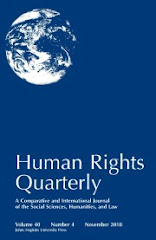The Lieber Code of 1863, one of the earliest attempts at codifying the laws of war, set the principle that the “privation and disturbance of private relations” during armed conflict must be treated as the exception and not the rule. President Abraham Lincoln who signed the Code into a general order, is also known for being the first U.S. President to authorize a bulk military signals intelligence (SIGINT) collection program, granting his Secretary of War, Edwin Stanton, the authority to tap into Confederate telegraph lines.
It would take twenty-seven more years before Warren and Brandeis would publish their landmark 1890 Harvard Law Review article, which laid the cornerstone for the international recognition of the fundamental human right to privacy. Nonetheless, the right did not find any explicit mention, let alone specific protection, in either the Hague Regulations of 1899 and 1907, the Geneva Conventions of 1949, or the Additional Protocols of 1977. Unsurprisingly, the International Committee of the Red Cross (ICRC) Customary IHL database also excludes any real mention of privacy or data protection within the 161 rules it identifies as constituting the common core of humanitarian law binding on all parties to all armed conflicts today.
A review of the roles that the rights to privacy and data protection play in regulating wartime military operations is long overdue. Literature exploring the use of digital technologies during armed conflict has centered mostly on either the development of lethal autonomous weapon systems or on various techniques in cyber and information warfare. Far more limited attention has been given to other more mundane technologies which wartime deployment could have significant privacy and data protection infringing effects.
This chapter in an upcoming second edition of the Research Handbook on Human Rights and Humanitarian Law explores three such case studies: (1) data protection obligations triggered by the monitoring of the civilian population in the occupied territories; (2) the restrictions imposed on wartime SIGINT collection for launching military operations; and (3) the obligations imposed on international organizations and criminal courts in the collection of digital evidence for jus post bellum investigations and fact-finding missions. These three cases were selected as they target three different obligation holders: a belligerent occupier, a targeting commander, and post factum investigator or prosecutor. In reviewing these case studies, the chapter explores the normative foundation and scope of application of the rights to privacy and data protection in IHL.
The chapter proceeds in the following order. Section II discusses the nature and scope of the rights to informational privacy and data protection under HRL. Section III examines the application of these rights during armed conflict, under the existing theoretical doctrines surrounding the concurrent application of HRL. This section argues that regardless of which specific doctrine one adopts, the rights to privacy and data protection must be read into our contemporary understanding of IHL. Section IV then moves to discuss the specific application of these rights in each of the three case studies. Section V concludes.
Tuesday, June 9, 2020
Lubin: The Rights to Privacy and Data Protection Under International Humanitarian Law and Human Rights Law
Asaf Lubin (Indiana Univ., Bloomington - Law) has posted The Rights to Privacy and Data Protection Under International Humanitarian Law and Human Rights Law (in Research Handbook on Human Rights and Humanitarian Law: Further Reflections and Perspectives, Robert Kolb, Gloria Gaggioli & Pavle Kilibarda eds., forthcoming). Here's the abstract:





